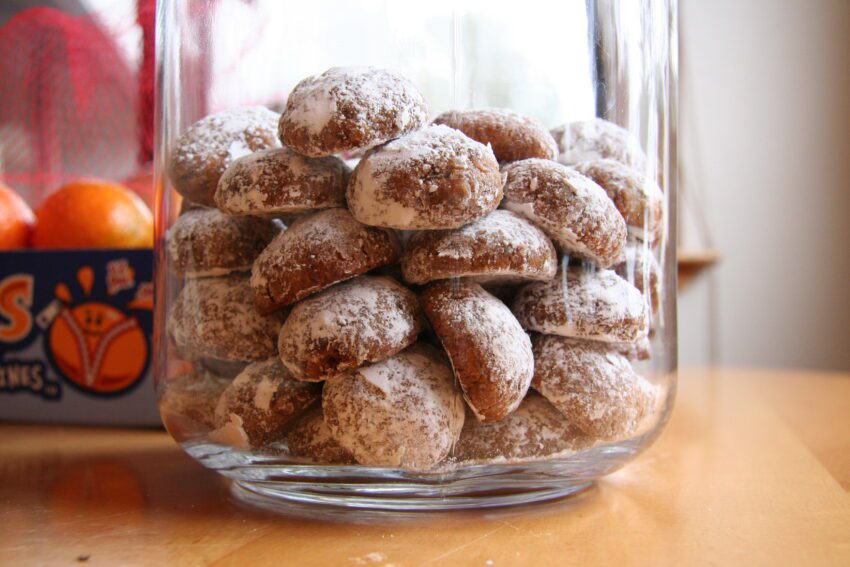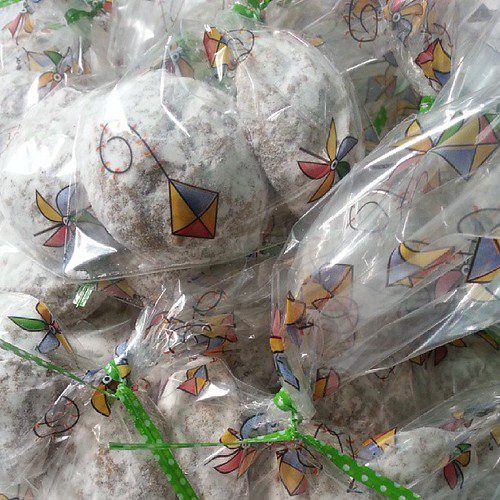Pfeffernüsse may have a complicated name, but the joy they bring is simple. These small, spiced, sugar-dusted cookies (often called “pepper nuts”) originated in Europe and have long been a symbol of holiday cheer.

This guide takes a closer look at the history of Pfeffernüsse, their cultural significance, and the distinctive blend of spices that gives them their unique flavor. It also highlights how using quality stainless steel cookware can help you bake the perfect batch at home.
Pfeffernüsse are closely tied to Christmas traditions, dating back to their association with Saint Nicholas Day in Germany. Over time, they became a beloved part of holiday celebrations and are now a familiar sight at Christmas markets across Europe.
Historical Background of Pfeffernüsse
Pfeffernüsse are closely tied to Christmas traditions, dating back to their association with Saint Nicholas Day in Germany. Over time, they became a beloved part of holiday celebrations and are now a familiar sight at Christmas markets across Europe.
Pfeffernüsse were traditionally baked during the Saint Nicholas festive period in December. Over time, its presence has become synonymous with Christmas, with families adding these biscuits to their list of beloved holiday baking traditions.
Being intricately connected to winter festivities, Pfeffernüsse is a much-awaited treat for many. It’s not unusual to see eager crowds around the Christmas markets, all waiting to fill their bags with these spiced treats.

The Unique Ingredients of Pfeffernüsse
Pfeffernüsse are known for their distinctive flavor, created through a careful balance of ingredients that work together to form these classic spiced cookies. The base typically starts with flour (often rye) to give the cookies their signature texture and lightness.
What truly defines Pfeffernüsse, however, is the blend of spices that sets them apart. Cinnamon, cloves, cardamom, allspice, and a touch of white pepper combine to create the warm, aromatic flavor that has made these cookies a holiday favorite for generations.
Honey or molasses adds depth and sweetness, while aniseed brings a subtle, sophisticated note that rounds out the spice mix. Once baked, the cookies are finished with a dusting of powdered sugar, giving them a soft, snowy look that evokes the charm of a winter celebration.
Each of these ingredients contributes to Pfeffernüsse’s enduring appeal that continues to capture the essence of the season with every bite.
What Are the Variations on Pfeffernüsse?
While the traditional German Pfeffernüsse recipe remains a holiday favorite, several regional and modern variations have developed over time, each bringing a unique twist to this spiced cookie.
In Germany and the Netherlands, Pfeffernüsse tend to be heavily spiced, featuring ingredients like cinnamon, nutmeg, cloves, cardamom, and black pepper. Some versions are rolled in powdered sugar for a soft, sweet coating, while others use a light sugar glaze for a crisp finish. Dutch versions, often called pepernoten, are typically smaller and slightly harder in texture, making them ideal for dipping in coffee or mulled wine.
Scandinavian versions lean toward milder spice blends, focusing more on ginger and anise for a subtler flavor. These often skip the sugar coating altogether, resulting in a less sweet but equally aromatic cookie.
In modern adaptations, bakers experiment with ingredients like honey or molasses for deeper flavor, or swap out white flour for whole grain or almond flour for a richer texture. Some contemporary recipes even incorporate citrus zest or finely chopped nuts for extra complexity.
Step-by-Step Recipe for Pfeffernüsse
Follow this step-by-step recipe and you’ll be able to bring a piece of European Christmas tradition to your kitchen in no time. Remember, patience and passion are the key ingredients in any recipe.
Ingredients
- 2 1/4 cups all-purpose flour
- 1/4 tsp white pepper
- 1/2 tsp each of ground cinnamon, cloves, allspice, and cardamom
- 1/4 tsp aniseed
- 1/4 cup honey
- 1/4 cup molasses
- 1/2 cup brown sugar
- 2 tsp baking soda
- 1 egg
- Powdered sugar for dusting
Instructions
- In a bowl, combine flour, white pepper, and other spices. Set this aside.
- Over medium heat in stainless steel cookware, combine honey, molasses, brown sugar, and baking soda. Stir until the mixture comes together in a smooth paste.
- Remove from heat and transfer it to a large mixing bowl. Let it cool.
- Add the egg to the cooled mixture, followed by the dry ingredients. Combine everything well.
- Form the dough into small, round balls, and place them on a baking sheet lined with parchment paper.
- Bake in a preheated oven at 350°F for about 15 minutes or until they harden on the outside.
- Once cooled, dust them generously with powdered sugar. Now enjoy your homemade Pfeffernüsse!
Bring Pfeffernüsse To Your Home Today
Pfeffernüsse captures the spirit of the holidays through its rich flavor, history, and tradition, all in one small cookie. Whether you follow a traditional recipe or add your own creative touch, the real joy comes not only from eating them but from the process of baking and sharing them with others.
So gather your ingredients, and enjoy the experience of making these festive treats. Baking Pfeffernüsse can be a fun way to start a new holiday tradition or keep an old one alive.
